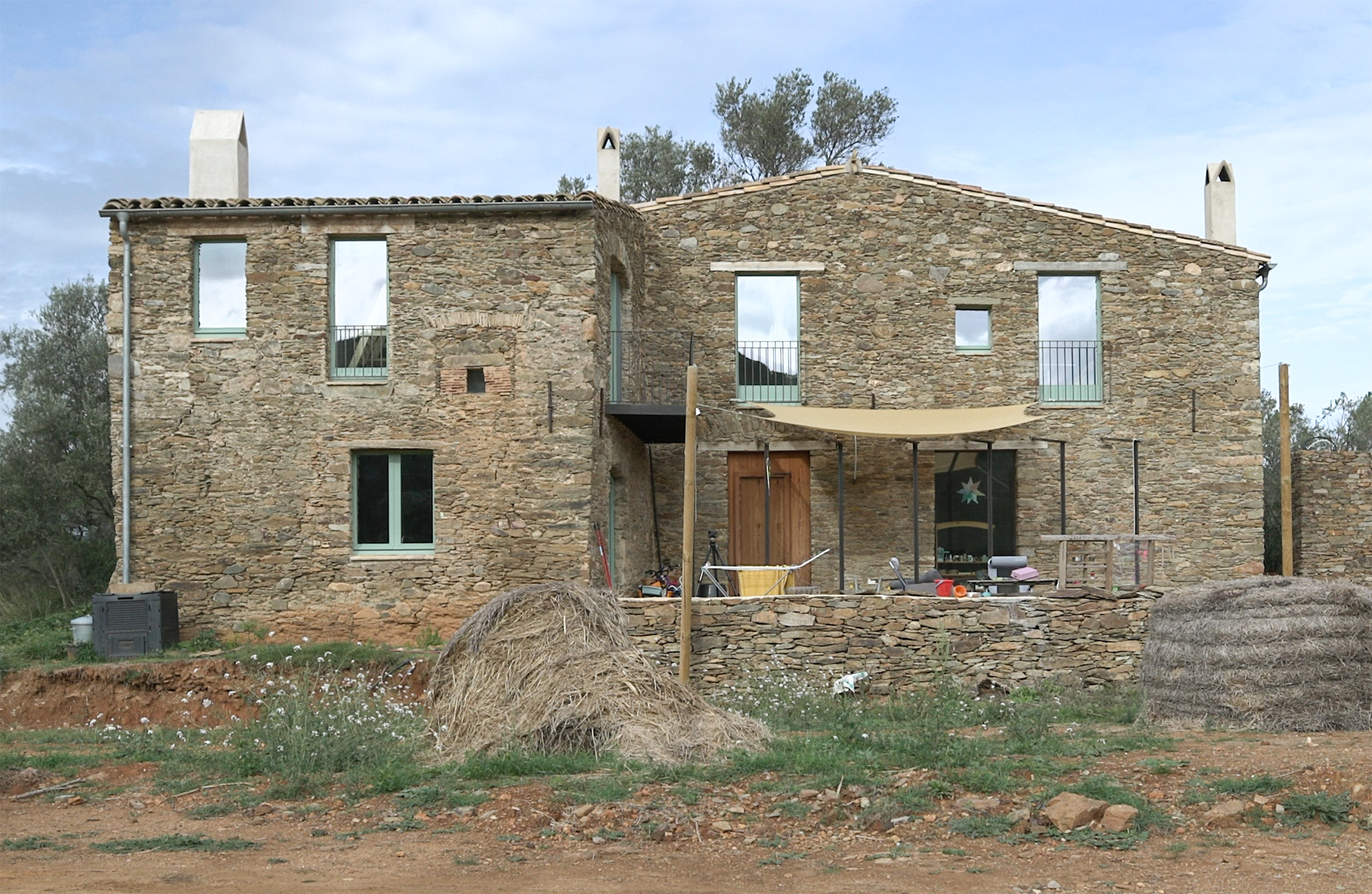Thermal inertia is a fundamental concept in the design and performance of buildings as regards energy efficiency and indoor comfort. In this article, we will explore what thermal inertia is, how it is calculated, and how it behaves in isolated buildings, as well as a practical example in rehabilitation. Understanding and taking advantage of thermal inertia can benefit us in reducing energy consumption and greater well-being of the occupants.
What is thermal inertia?
Thermal inertia indicates the ability of a building to keep its internal temperature as constant as possible despite changes in the surrounding temperature. This depends on the capacity of the materials that make up the building to absorb heat.
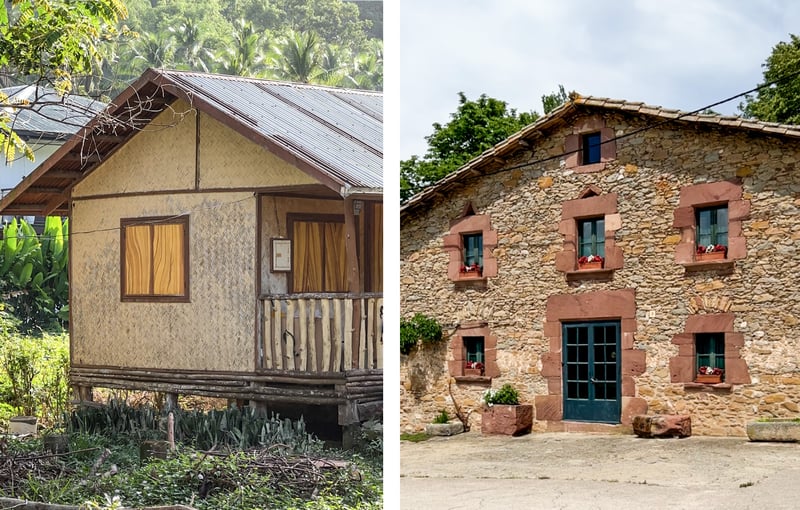
For example, the house on the left has very little thermal inertia, but it doesn't need it because it is located in a tropical climate where temperature variations are minimal. On the other hand, the house on the right, in a Mediterranean climate where temperature fluctuations are greater, can benefit much more from having a lot of thermal inertia. In this case, the thermal inertia is achieved by the large mass of stone that makes up the envelopes.
How is it calculated?
In an ideal case, thermal inertia allows the indoor temperature to be kept within the comfort zone, dampening outdoor temperature variations and thus minimising the use of active HVAC systems.
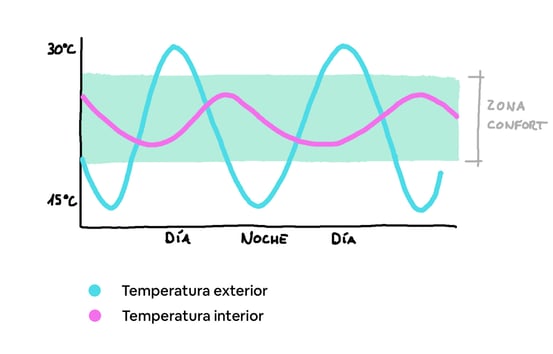
This property depends directly on the heat capacity (Qc) of the materials used in the construction of the building, which we can define as the sum of the masses of the materials times their specific heat (Ce).
Qc = ΣM · Ce
The specific heat of most construction materials is close to 0.2 kcal/kg °C, so the heat capacity depends primarily on the mass of the materials used. A building constructed with heavy materials will have more thermal inertia than a building constructed with light materials, but a heavy building implies a larger structure to support it. Therefore, we will have to assess whether it is more beneficial for us to have thermal inertia or to reduce the amount of construction materials needed.
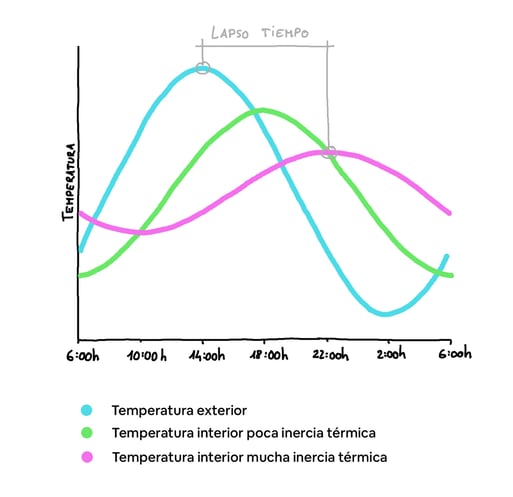
In the upper graph, we can see the difference in the variation of interior temperature of a building with different degrees of thermal inertia. The more thermal inertia, the less temperature variation and the longer the time lag between temperature changes.
A case where thermal inertia can be detrimental is in homes used sporadically (such as a weekend flat in the mountains), as it may require a large amount of energy to heat it when we arrive, causing us to spend a few hours in discomfort, and subsequently, the stored heat in the structure will not be used, dissipating slowly with the house empty.
Behaviour of thermal inertia in isolated buildings
A reasonable doubt is to think whether thermal inertia is necessary or if it has any effect when a building is well insulated. Let's look at an example:
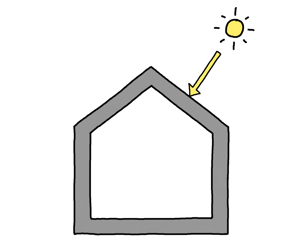
In this case, we see a building with a large mass of concrete, with high thermal inertia. This will absorb the heat and keep the interior cool.
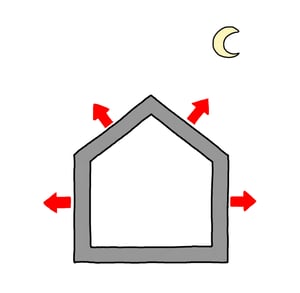
The heat is always directed towards the cooler area, so if the temperature drops during the night, the heat will dissipate outwards. In this way, the next day, the concrete structure will be ready to absorb heat again during the day.
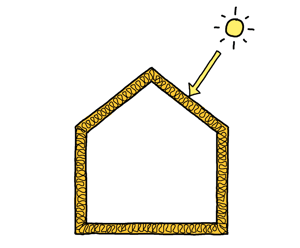
If we compare it to a well insulated but low mass building, the effect can be similar, during the day and at night we can have a good indoor temperature. But this is not achieved by absorbing the heat, but by making it more difficult for it to pass into the interior.
The big difference is that if we have internal thermal loads, or direct solar radiation enters and heats the interior, that heat will not escape to the outside and we can have overheating. On the other hand, the structure with a lot of mass would have absorbed the heat generated inside during the day and dissipated it to the outside during the night.
Thermal inertia in rehabilitation projects
In rehabilitation, it is common to insulate well while taking advantage of the benefits of the thermal inertia of the existing building, although it is not always easy.
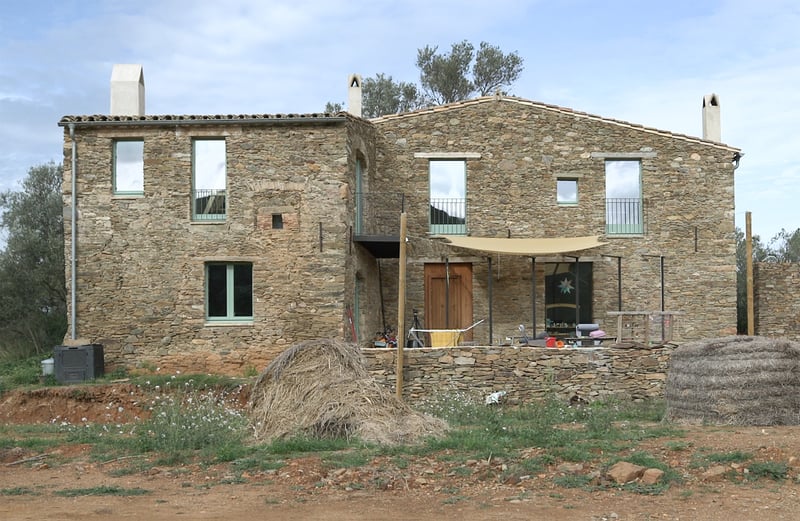
This renovated farmhouse cannot take advantage of the thermal inertia of the stone façades because it has been insulated on the inside to leave the original stone visible. In the following photograph, we see the homeowner showing the thickness of the insulation. At the point where the insulation is shown, the thermal envelope ends, leaving part of the stone wall exposed from the inside.
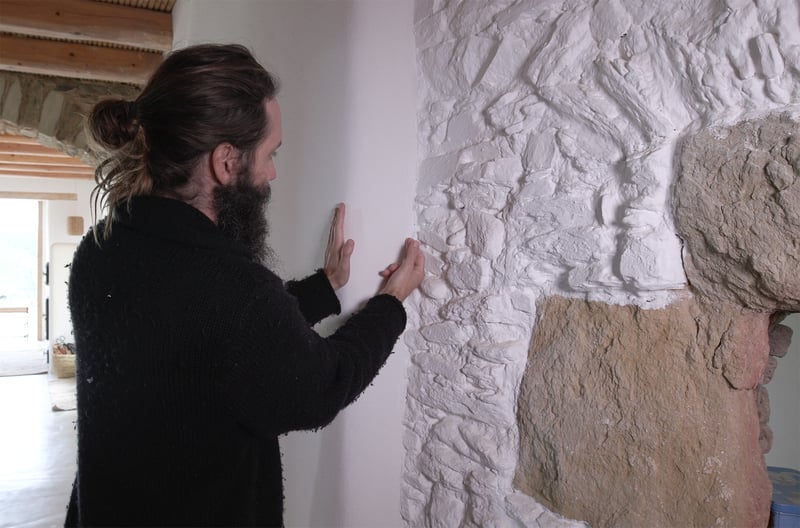
At the end of the staircase, we see the small window and the thickness of the façade wall, from which the thermal inertia cannot be practically utilized because it is on the exterior side of the insulation. But we can see the large interior walls, on the left of earth and on the right of stone, two materials with a high thermal inertia.
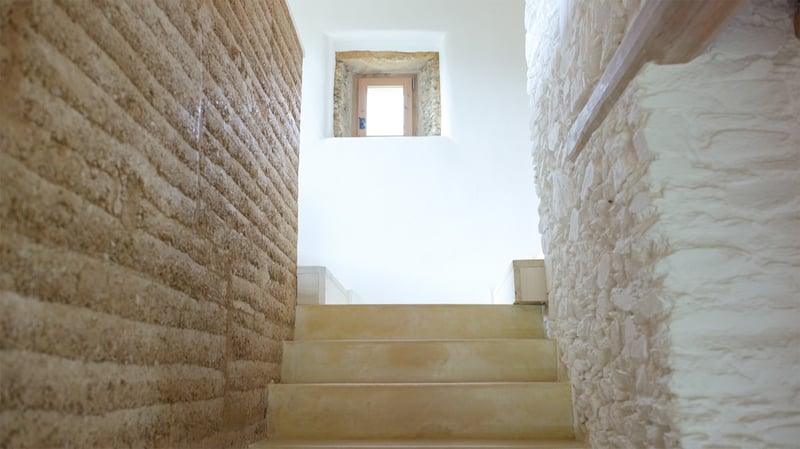
The effect of having this mass inside the house is to dampen temperature variations. During a hot day, they can absorb the heat and therefore provide more interior comfort, but it is important that this heat can dissipate during the night, because if the temperature does not drop or the windows are not opened to cool down, the effect that all that mass will have inside the house will be very small.
In conclusion, understanding how thermal inertia works allows us to design buildings that offer more comfort and less energy consumption. In very well insulated buildings, the effect of thermal inertia may be less, and it is now more common to see new buildings that are well insulated than those with high thermal inertia, not least because the latter requires the use of large amounts of material and this has a considerable environmental impact. In the case of rehabilitation, it is very interesting to take advantage of the thermal inertia of existing materials, so it will be crucial to design the thermal insulation solution thinking about leveraging the thermal inertia for the benefit of comfort and energy efficiency.

